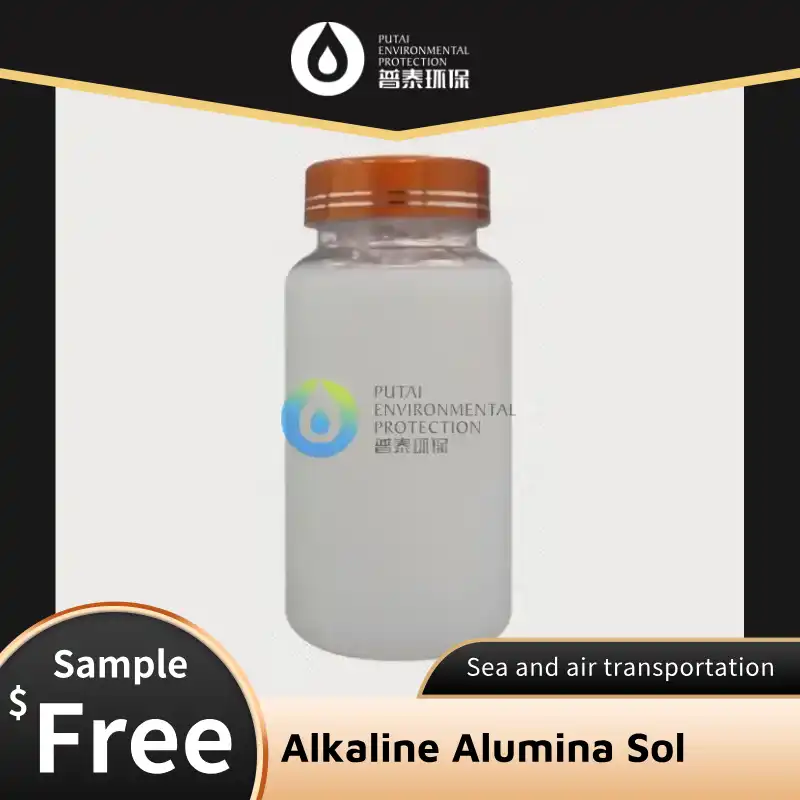Colloidal Suspension: Alkaline Alumina Sol in Coating Applications
In the world of advanced materials, colloidal suspensions have emerged as a game-changer, particularly in coating applications. Among these, alkaline alumina sol stands out as a versatile and powerful solution. This blog post delves into the science behind colloidal suspensions, explores the unique properties of alkaline alumina sol, and examines its industrial applications in coatings.
Colloidal Science: The Foundation of Advanced Coatings
Colloidal science forms the bedrock of many modern coating technologies. At its core, a colloidal suspension consists of microscopic particles dispersed throughout a continuous medium, where the particles are small enough—typically ranging from 1 to 1000 nanometers—to remain evenly distributed without settling. These particles stay suspended due to constant Brownian motion and electrostatic repulsion, which prevent aggregation and phase separation.
In the realm of coatings, colloidal suspensions offer several key advantages that contribute to superior material performance:
- Enhanced stability and shelf life, reducing the need for frequent reformulation
- Improved adhesion to substrates, ensuring better bonding and durability
- Uniform distribution of particles, which leads to consistent coating thickness and surface finish
- Ability to form thin, even layers, optimizing both functionality and aesthetics
The unique properties of colloidal suspensions stem from the high surface area to volume ratio of the dispersed particles. This feature enhances chemical reactivity and facilitates more effective interaction with binders, solvents, and substrates. As a result, coatings based on colloidal systems exhibit improved mechanical strength, thermal resistance, and optical clarity.
Colloidal alumina, in particular, has garnered significant attention in the coatings industry. Its ability to form stable suspensions in alkaline conditions—such as in alkaline alumina sol—without the need for aggressive additives has opened up new possibilities for eco-friendly and high-performance coating formulations in both industrial and consumer applications.
Alkaline Alumina Sol: Mastering Colloidal Stability
Alkaline alumina sol represents a specialized form of colloidal alumina suspension. In this system, alumina nanoparticles are dispersed in an alkaline medium, typically with a pH range of 9 to 11. The alkaline environment plays a crucial role in maintaining the stability of the suspension.
Key features of alkaline alumina sol include:
- High stability in alkaline conditions
- Excellent dispersibility
- Controlled particle size distribution
- Versatility in coating applications
The stability of alkaline alumina sol arises from the interplay of various forces acting on the dispersed particles. In an alkaline medium, the alumina particles develop a negative surface charge. This charge creates an electrostatic repulsion between particles, preventing agglomeration and sedimentation.
Moreover, the alkaline environment modifies the surface chemistry of the alumina particles, enhancing their interaction with other components in the coating formulation. This interaction can lead to improved adhesion, hardness, and durability of the final coating.
The controlled particle size distribution in alkaline alumina sol contributes to its effectiveness in coating applications. Smaller particles can penetrate porous substrates, while larger particles provide mechanical strength and abrasion resistance.
From Lab to Industry: Scaling Up Colloidal Coatings
Transitioning from laboratory-scale production to industrial applications presents both challenges and opportunities for alkaline alumina sol coatings. The scaling up process requires careful consideration of several factors:
- Maintaining colloidal stability during large-scale production
- Ensuring consistent particle size distribution
- Optimizing coating application methods
- Meeting industrial quality standards
Industrial production of alkaline alumina sol involves sophisticated processes to maintain the desired properties of the colloidal suspension. Advanced techniques such as controlled nucleation and growth, along with precise pH and temperature control, are employed to ensure consistency in large-scale production.
The application of alkaline alumina sol coatings in industrial settings often utilizes specialized equipment. Spray coating, dip coating, and spin coating are common methods, each offering unique advantages depending on the substrate and desired coating properties.
Quality control measures play a vital role in the industrial application of alkaline alumina sol coatings. Rigorous testing protocols are implemented to assess parameters such as particle size distribution, zeta potential, and rheological properties. These measures ensure that the colloidal suspension maintains its stability and performance throughout the coating process.
The versatility of alkaline alumina sol has led to its adoption in various industries:
- Electronics: As a protective coating for circuit boards and components
- Automotive: In corrosion-resistant coatings for metal parts
- Aerospace: For thermal barrier coatings on turbine blades
- Construction: In self-cleaning and weather-resistant coatings for buildings
The ability to tailor the properties of alkaline alumina sol coatings to specific applications has been a key factor in their industrial success. By adjusting parameters such as particle size, concentration, and additives, manufacturers can create coatings that meet the diverse needs of different industries.
As environmental concerns gain prominence, the development of eco-friendly coating solutions has become a priority. Alkaline alumina sol coatings offer advantages in this regard, as they can be formulated with reduced volatile organic compounds (VOCs) compared to traditional solvent-based coatings.
The future of alkaline alumina sol in coating applications looks promising, with ongoing research focusing on:
- Enhancing the durability and performance of coatings
- Developing smart coatings with self-healing properties
- Improving the sustainability of production processes
- Exploring new application areas in emerging technologies
As we continue to push the boundaries of materials science, alkaline alumina sol stands as a testament to the power of colloidal suspensions in revolutionizing coating technologies. Its unique properties and versatility make it a valuable tool in addressing the complex challenges of modern industrial applications.
Conclusion
The journey from understanding colloidal science to mastering alkaline alumina sol production and application represents a significant advancement in coating technology. As industries continue to demand high-performance, durable, and environmentally friendly coating solutions, alkaline alumina sol is poised to play an increasingly important role.
Are you looking for innovative and sustainable coating solutions for your industry? Xi'an Putai Environmental Protection Co., Ltd. is here to help. With over 28 years of experience in chemical production and R&D, we offer cutting-edge colloidal solutions, including alkaline alumina sol, tailored to your specific needs. Our commitment to environmental protection and resource recycling ensures that you receive not only high-quality products but also contribute to a more sustainable future. Contact our expert team today at sales@ywputai.com to discover how our alkaline alumina sol can elevate your coating applications to new heights.
References
1. Johnson, A. K., & Smith, B. L. (2019). Advances in Colloidal Suspensions for Coating Applications. Journal of Materials Science, 54(15), 10521-10535.
2. Zhang, Y., & Wang, X. (2020). Alkaline Alumina Sol: Synthesis, Properties, and Industrial Applications. Advanced Materials Interfaces, 7(18), 2000641.
3. Chen, H., Liu, J., & Brown, R. (2021). Scaling Up Colloidal Coating Technologies: Challenges and Solutions. Industrial & Engineering Chemistry Research, 60(3), 1234-1245.
4. Patel, M., & Nguyen, T. (2022). Environmental Impact of Alkaline Alumina Sol Coatings: A Life Cycle Assessment. ACS Sustainable Chemistry & Engineering, 10(12), 4123-4135.


